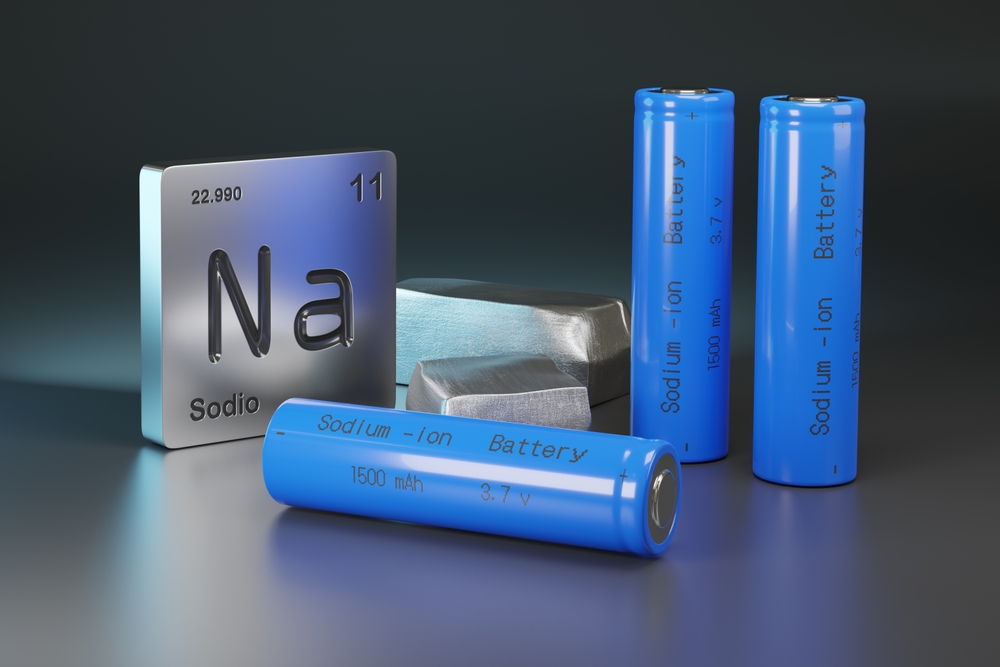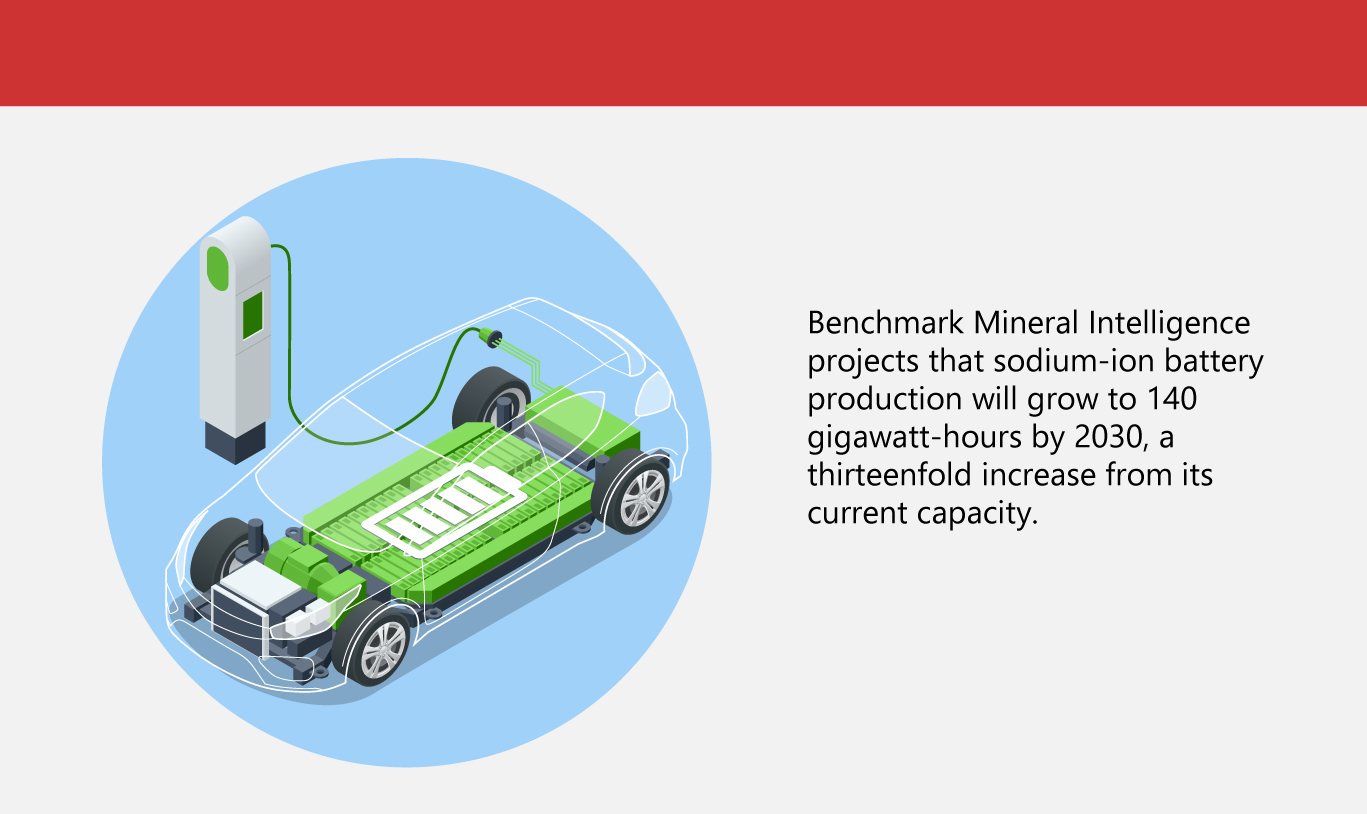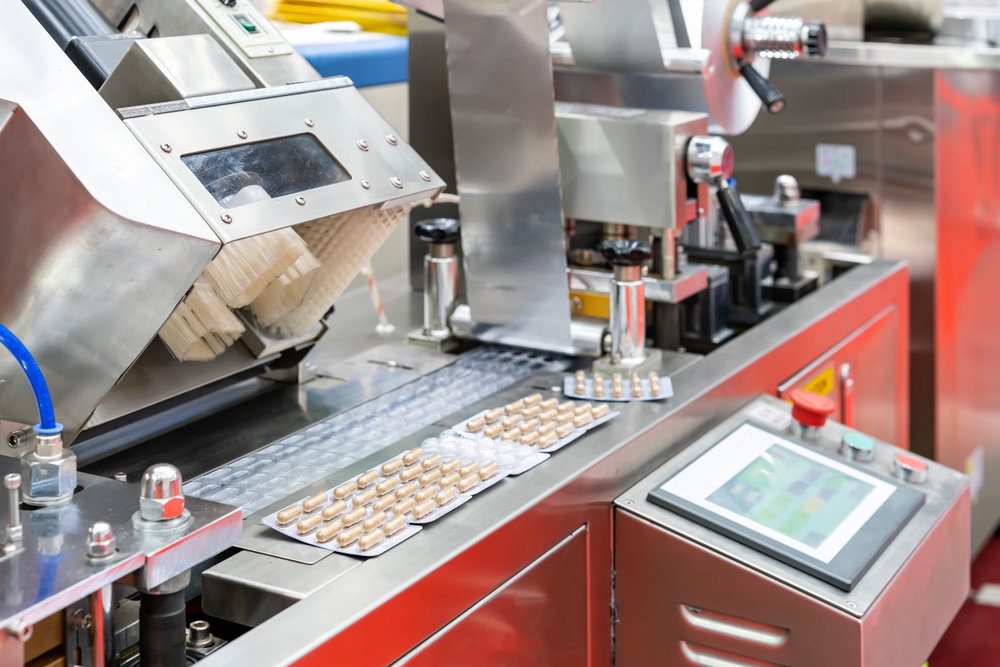Sodium-Ion Batteries: What You Need to Know?

As the world shifts to widespread electric adoption, battery innovation is key for manufacturing markets seeking cost-effective alternatives to lithium. Sodium-ion technology is emerging as a potential solution to major challenges in EV battery production.
What are sodium-ion batteries?
Sodium-ion batteries use sodium ions instead of lithium to store and release energy through a liquid electrolyte. Interest in this technology first grew in the 1970s and 1980s as a cost-effective alternative, but today, the automotive market sees it as a way to ease pressure on the strained lithium supply chain amid rising battery demand.
Sodium-ion batteries are gaining momentum, driven by recent global developments:
- China-based CATL, the world's largest battery maker, unveiled its second-generation sodium-ion battery, set for mass production in 2027. This new product introduction boosts energy density to 200 watt-hours per kilogram, up from 160 in the 2021 version, enhancing the EV range.
- A group of six U.S. national laboratories, led by Argonne National Laboratory, launched a $50-million initiative to boost product development in sodium-ion batteries.
- China's BYD has begun building a sodium-ion battery plant in Jiangsu, with an investment of 10 billion yuan ($1.4 billion). The facility aims to reach an annual production capacity of 30 gigawatt-hours, enhancing its manufacturing capabilities.
- Stellantis, the French-Italian automaker, announced that it is investing in Tiamat, a European startup producing sodium-based batteries. This investment, part of a 150-million euro fundraising, highlights the growing interest from automotive parts suppliers in sodium-ion technology.
(Also read: Why China is Winning the EV Race)
Benefits of using sodium-ion EV batteries
Sodium-ion batteries are emerging as a promising option, offering exciting possibilities for the future of EVs.
-
Affordability
Sodium-ion batteries are a more affordable option compared to lithium-ion, with costs around $40-80/kWh versus $120/kWh for lithium. While lithium prices are currently low due to surplus supply, sodium’s abundance in salt and soda ash offers long-term cost advantages. Material testing suggests sodium-ion batteries could be 20% cheaper, with stable material costs expected over time, making them a promising alternative for the future of energy storage.
-
Stability and durability
Thermal analysis shows sodium-ion batteries perform better than lithium-ion in cold conditions. CATL’s new batteries work in temperatures as low as -40°F. Additionally, sodium-ion batteries have a lower risk of fire, as they’re less prone to thermal runaway, a common issue with damaged lithium-ion batteries. This stability against temperature extremes increases their durability. Manufacturing processes are similar to lithium-ion, allowing easier integration into existing production lines.
-
Less supply chain management risks
Countries with access to abundant sodium resources could potentially harvest and process sodium-ion batteries locally. As sodium is found in common minerals like salt, nations with access to these materials could reduce dependency on global supply chains. This would lower transportation costs and minimize risks associated with the dominance of lithium production, offering a strategic advantage for industries, like the EV sector.
-
Material availability
Because sodium is widely available, sodium-ion batteries present a more sustainable option than lithium-based ones, minimizing the need for critical minerals like lithium, cobalt, and nickel. As global demand for alternative energy storage grows, sodium-ion batteries present an opportunity for more localized manufacturing, reducing risks associated with outsourcing. It also promises lower costs and a smaller ecological impact, addressing energy storage and EV needs.
-
Faster charging times
Researchers from the Korea Advanced Institute of Science and Technology (KAIST) have developed a hybrid energy storage solution by combining supercapacitor technology with sodium-ion batteries. By developing a new battery with a sophisticated anode and cathode, the team has found a way to improve energy storage capacity while enabling faster charge and discharge rates, making it well-suited for EVs. Product testing is ongoing to refine performance.
(Also read: Next-Gen EVs for Your Driving Pleasure)
Challenges faced by sodium-ion batteries
Sodium-ion batteries, while promising for energy storage, face several challenges that hinder their widespread adoption.
-
Limited energy density
A significant limitation of these batteries is their lower energy density compared to lithium-ion. Sodium-ion cells typically provide around 150 watt-hours per kilogram, while lithium-ion can reach 180 to 300 watt-hours. This results in EVs using sodium-ion batteries covering fewer miles per charge. Still, ongoing system development aims to address these issues and optimize the performance of sodium-ion batteries for various applications.
-
Scalability
While sodium is widely accessible, sodium-ion batteries encounter challenges in expanding production due to material constraints, particularly with advanced cathodes and anodes. As the demand for EVs grows, the key to sodium-ion batteries’ future lies in overcoming scalability issues. Achieving manufacturing excellence will be essential to ensuring these batteries can meet mass-market needs. Success in this area depends on efficient resource management and robust production processes.
-
Heavier atomic weight
Sodium’s heavier atomic weight—3.3 times greater than lithium—presents a challenge for battery performance. This increased weight leads to lower energy density, meaning they store less energy per unit of mass. Consequently, EVs using sodium-ion batteries may require larger, heavier batteries to achieve similar ranges as their lithium-ion counterparts. Overcoming this challenge requires improvements in product design and material science to maintain energy output while managing weight.
-
Environmental issues
While sodium-ion batteries offer a more sustainable alternative by reducing reliance on critical minerals like lithium and cobalt, they still face challenges. The scalability of materials, such as high-performance cathodes and anodes, poses hurdles. Moreover, environmental concerns around extracting and processing other materials for sodium-ion batteries remain. Addressing these issues will be crucial for sodium-ion batteries to become a viable widespread energy storage solution with a long product life profile.
-
Tech maturity
Lithium-ion batteries dominate the market, with global production reaching around 1,500 gigawatt-hours this year. In contrast, sodium-ion battery production remains limited, accounting for just 11 gigawatt-hours, less than 1% of lithium-ion production. This discrepancy highlights the significant gap in technological maturity and market adoption, underscoring the challenges sodium-ion batteries face in gaining widespread acceptance in global manufacturing, despite their potential advantages in certain applications.

Sodium-ion batteries are emerging as a cost-effective, sustainable alternative to lithium-ion, offering promise for energy storage and EVs. Despite challenges, their development reflects a push for better sustainability. Continued research and innovation will be crucial for overcoming limitations, and positioning sodium-ion batteries as a viable future option in the EV and energy sectors.
As one of the Top 20 EMS companies in the world, IMI has over 40 years of experience in providing electronics manufacturing and technology solutions.
We are ready to support your business on a global scale.
Our proven technical expertise, worldwide reach, and vast experience in high-growth and emerging markets make us the ideal global manufacturing solutions partner.
Let's work together to build our future today.
Other Blog



